Today was a particularly hard day. I have been courageously applying to shows and public art projects, contacting blog curators, galleries, and pitching press releases for the past four weeks in an effort to break through and find “my audience.” My inbox held not just one, but three rejection notifications to applications I submitted. Gut punch.
You would think that after ten years of receiving rejection emails, it wouldn’t sting quite so much, but it does. Let’s be honest. Someone is telling you that they don’t want what you’re offering and for most of us, we are offering more than just a product, we are offering a part of ourselves.
Rejection is something to be expected as you blaze your artistic trail, but how do you handle it? How do you not let it sink you? Here’s a couple of things I’ve done to help myself through the most recent slew of rejections.
Listen to the conversation in my head. The first sentence in my inner dialogue after reading a rejection letter is, “You’re such a failure.” And if I let it, the dialog gets darker and poisonous. We all talk to ourselves and what we say plays a big part in how we view ourselves and others. I like to catch myself early and ask, “is that really true?” When I ask that question, it stops the flood of exaggerated, emotionally charged thoughts and re-centers me on something much more objective and logical. In most cases, I can say, “no, that’s not true, but here is something that is true: I had the courage to try something. I didn’t get this job or get into this show, but that doesn’t change my value as a person.”
Go do something that brings you life. The worst thing I can do after receiving rejection letters is to go and try to apply for more stuff. I find applying for shows and doing anything related to “selling,” scary and exhausting. Necessary, yes, but exhausting. What I need in this moment is something that brings back some life. That might be going on a run. Having a dance party with my kids or it might be painting. Whatever it is, give yourself permission to do that thing so you can get back on track.
Talk to someone about it. Another thing I tend to do is bottle up the rejection and let it fester. Don’t do that. Find someone to talk to. I share my frustration and hurt with my husband. He is an engineer, so he doesn’t necessarily “get” the whole art thing, but he knows how to comfort me best and that’s what I need in those moments. Comfort and a reminder that I am loved no matter what happens with my art.
Learn from it and try again. Rejection can be a great teacher. Find out who got the show you wanted. What sets him/her apart? Ask questions about why you weren’t chosen. Was it your writing style? Your painting style? Your resume? The more data you can collect, the easier it is to pinpoint what went wrong and grow from that. After many attempts at show and gallery submissions and now, guest blog queries, I’m quickly learning how to fine tune my submissions and direct them to more receptive venues/audiences. I’m learning more about myself, my art, and my collectors. And then the most important part…try again. Use your new found knowledge and try again. Give yourself some time to process the rejection, but don’t just stay there. You might risk more rejection, but you just might meet some success as well.
What have you found to be most helpful in dealing with rejection as an artist?
———————————————————————————————-
 Amelia Furman grew up in rural, central Pennsylvania amidst pastoral scenes of farms, fields, and forests. Nature has captured her attention for as long as she can remember. Visual arts were also a dominant force in Furman’s life from an early age. After graduating with a degree in visual art from Indiana Wesleyan University in 2003, Furman began to explore how she could use paint to express her love of the natural world.
Amelia Furman grew up in rural, central Pennsylvania amidst pastoral scenes of farms, fields, and forests. Nature has captured her attention for as long as she can remember. Visual arts were also a dominant force in Furman’s life from an early age. After graduating with a degree in visual art from Indiana Wesleyan University in 2003, Furman began to explore how she could use paint to express her love of the natural world.
Furman’s background in printmaking and illustration has heavily influenced the direction of her work. She works in a combination of paper collage, text and thin layers of acrylic paint. Using a selection of documents, vintage images, handwritten text, and symbols associated with the painted image, Furman reminds the viewer that places and objects have many layers of meaning, memory, and beauty.
Furman displays her work throughout the United States in traditional and non-traditional venues and her works can be found in private collections nationwide. She resides in Loveland, CO with her husband and two sons.
Artist Statement
Life is about layers creating a whole and my work exudes this same idea.
I have been enamored with creating, problem solving, and the artistic manipulation of materials since childhood. My mother can attest to my intense focus as I would take my everyday surroundings and attempt to turn them into the world I saw so vividly in my mind.
As my artistic vision developed, I felt compelled to deepen my understanding of the multi-layered relationships between places, people, feelings, and objects. Since I function on physical, emotional, mental, and spiritual levels, I feel my artwork should do the same. I strive to understand things in a very holistic fashion, looking at all levels of thought, feeling, and existence.
I work in multiple layers that speak to the various ideas, responses, and even subconscious reactions that a place, person, or object can activate. The subject matter that I choose to paint always has a personal connection, whether it is somewhere I’ve been, someone I know, or something I own. The materials I choose to include in my paintings are often commercial reproductions and publications that are closely connected to the location represented in the image, or found papers and objects around my own home.
I find great joy in bringing a piece to life by creating associations of word, image, color, and texture with the main subject. It’s a process that I have some control over, but I’m always amazed by the final product. Part of the beauty of seeing the completed work is finding things in my paintings that I didn’t know existed before.
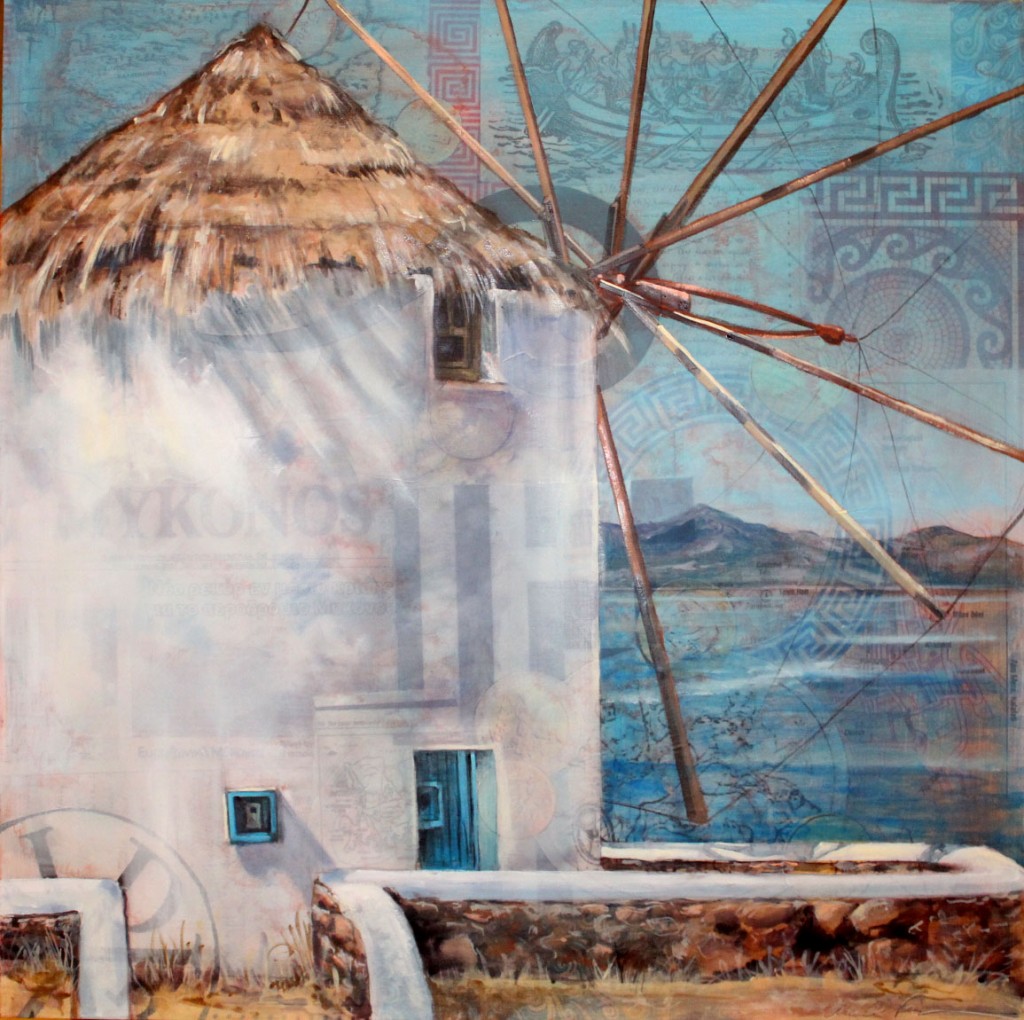
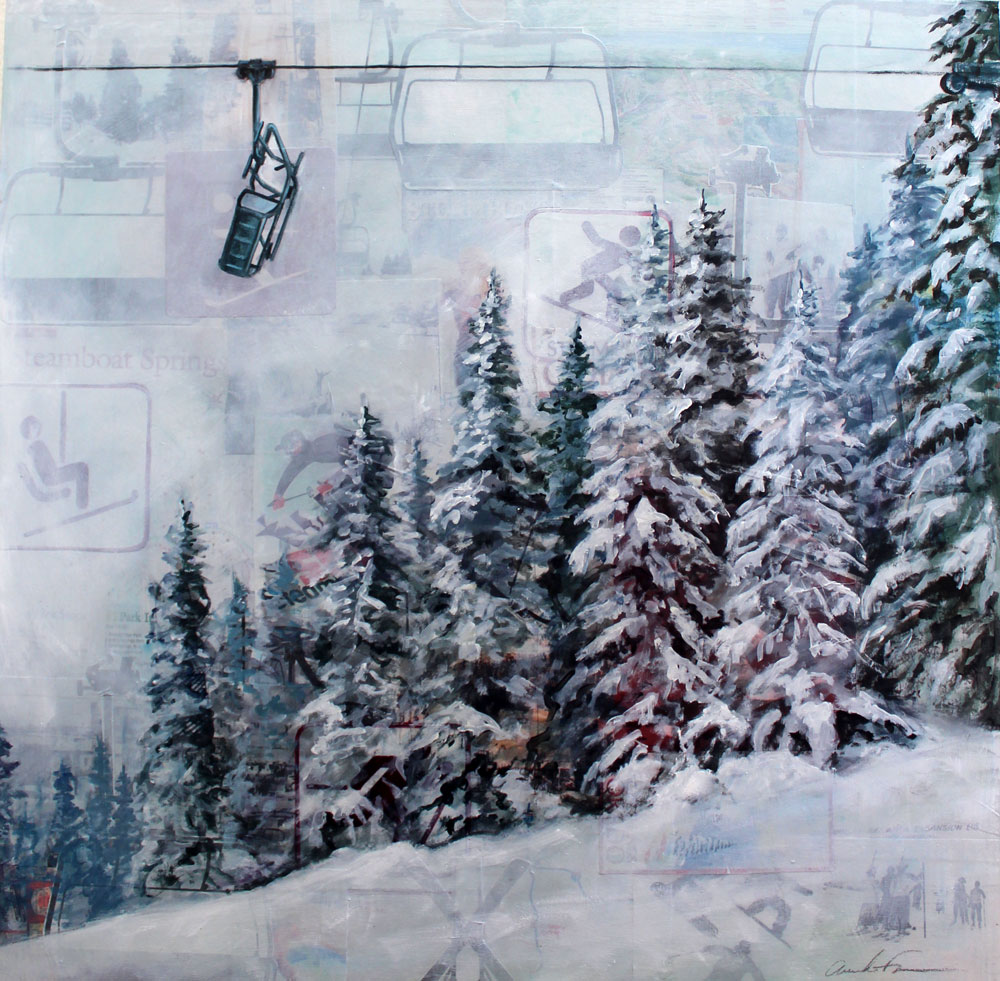
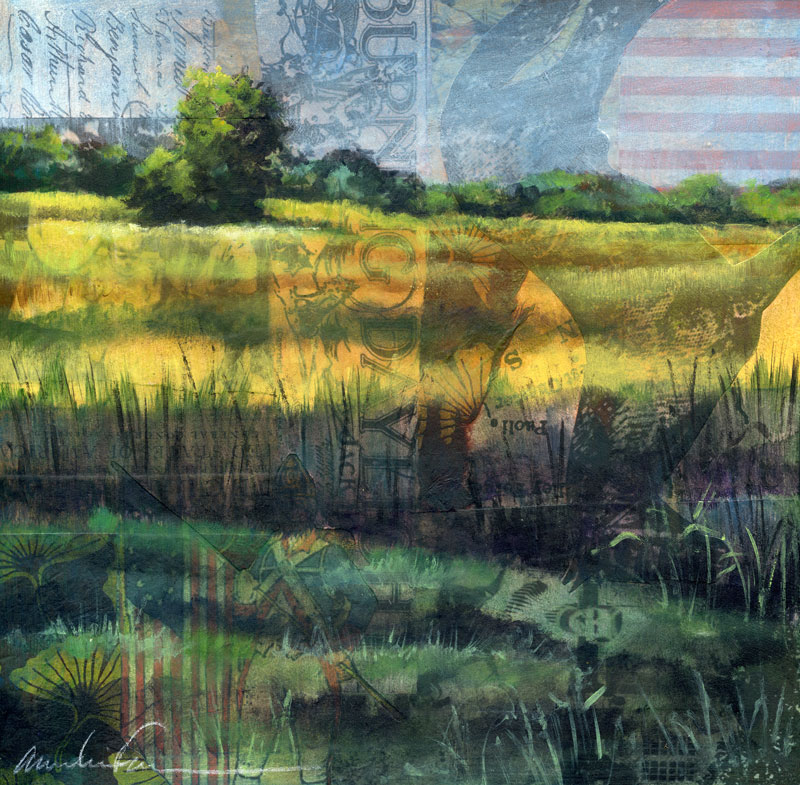
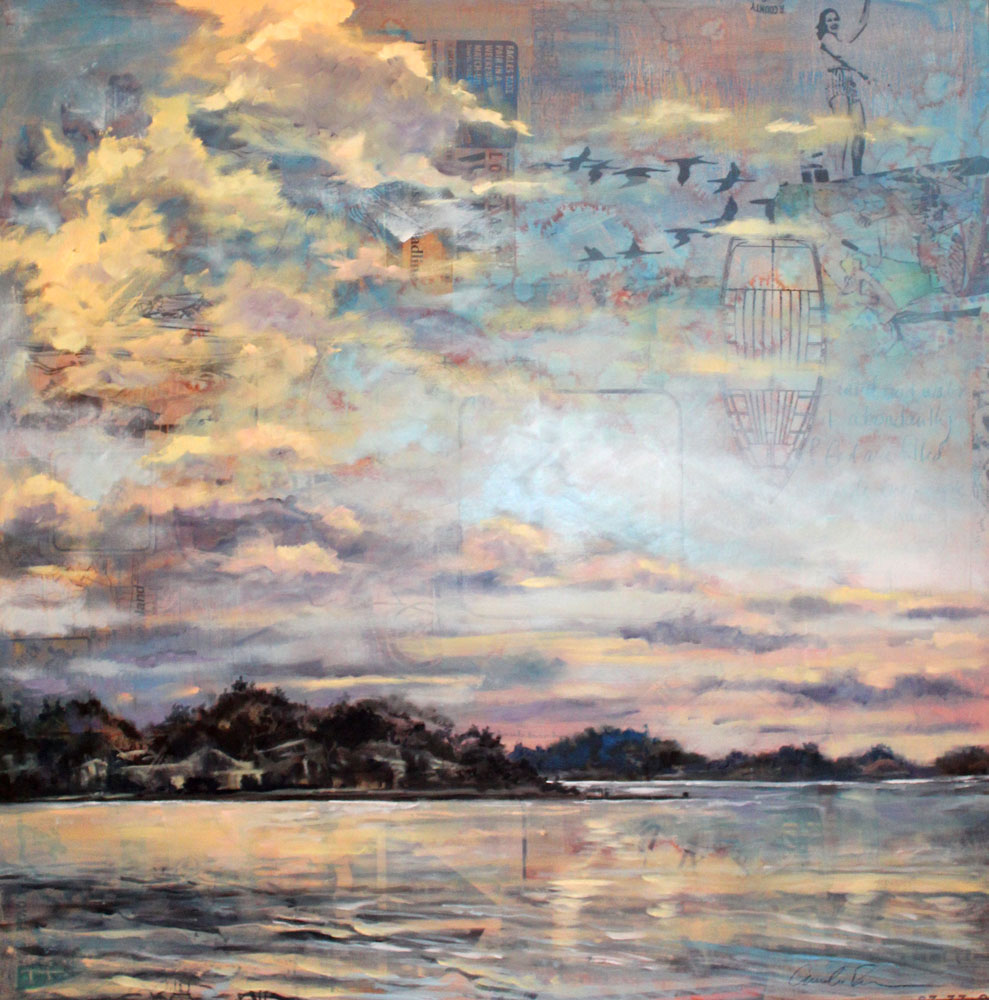
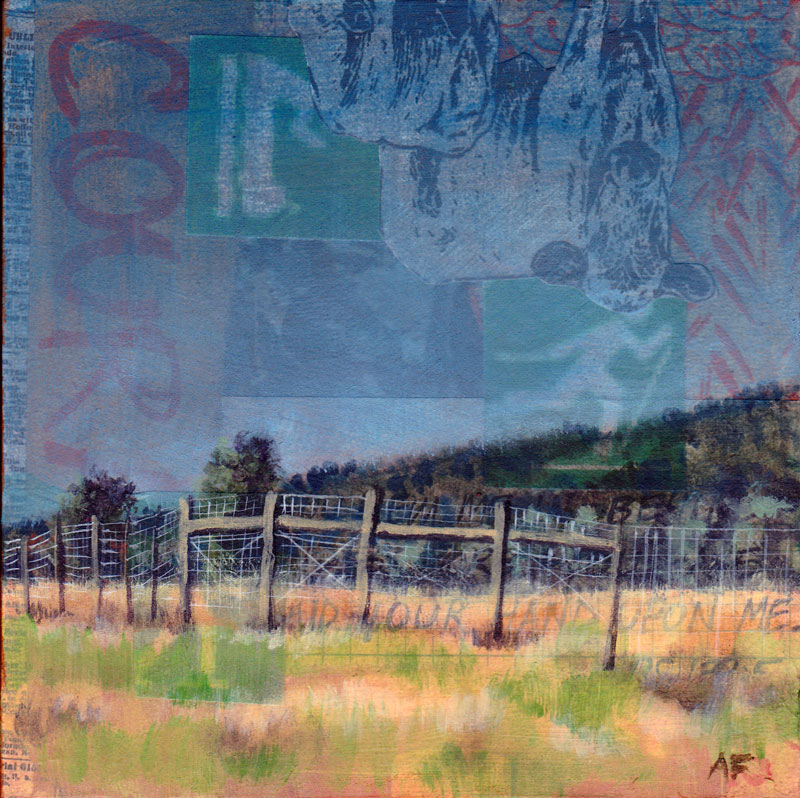
Rejection can be hard, but I love remembering how many famous writers were rejected before making it big, and that helps me! Google it!
Ugh! Rejection sure stings! And it can be so discouraging! I think it’s completely normal to vent a little, feel a little down, but then hopefully get back up and keep going! I’m glad I’m not the only one that is hard on themselves after being rejected!
Great advice for struggling artists out there. Don’t give up!
Well I will tell you this…you are AMAZING!!!!!
I think your artwork is beautiful! I completely understand how hard rejection can be but there is so much to learn from it as well. If you haven’t checked out Brene Brown’s newest book Rising Strong I highly recommend it! It has been an amazing read for me and really opened my eyes to a lot of things.
For what it’s worth, I think your art is great. Sometimes it’s more about the actual venue or manager rather than your art. This could just be an opportunity for you to do some event management of your own and put on your own show!
UGH. Rejection. Early on in my art career, it DID sink me. I sank to very low depths…until I was offered the opportunity to jury an exhibit myself. When I actually was involved in the process (and have subsequently juried more since), I realized that it is truly NOTHING personal. Not at all. The piece may not have worked cohesively, or it wasn’t the size they were looking for, or you’re part of a three-person team and for another arbitrary reason, the three of us didn’t agree. After that experience, it was so much easier to say, “Oh rats. I was looking forward to that show. But I’ll be in the next one!”, when I wouldn’t be accepted in shows, and move on.
I’m sure that whatever happens, happens for our benefit, though it may seem like a disaster at first glance. I know that by lots of tough experience.
Don’t lose faith in yourself, dear people, you all are brilliant, rejection is not a world’s direct attack on you. It may seem like that. But God knows better… <3